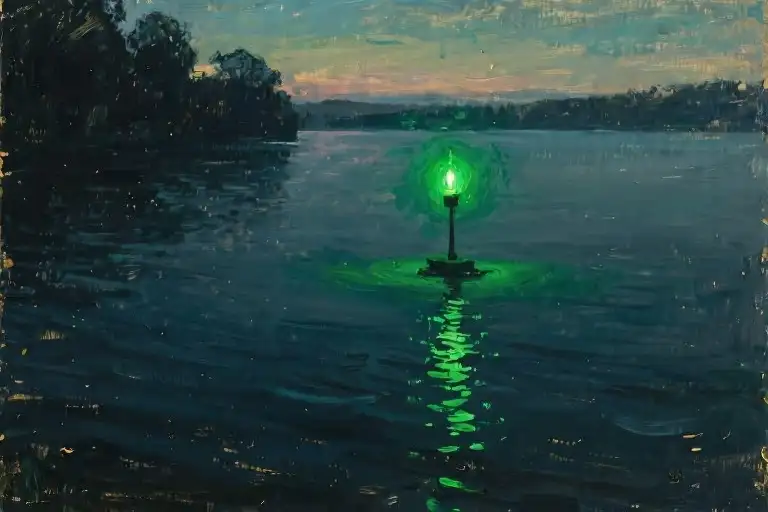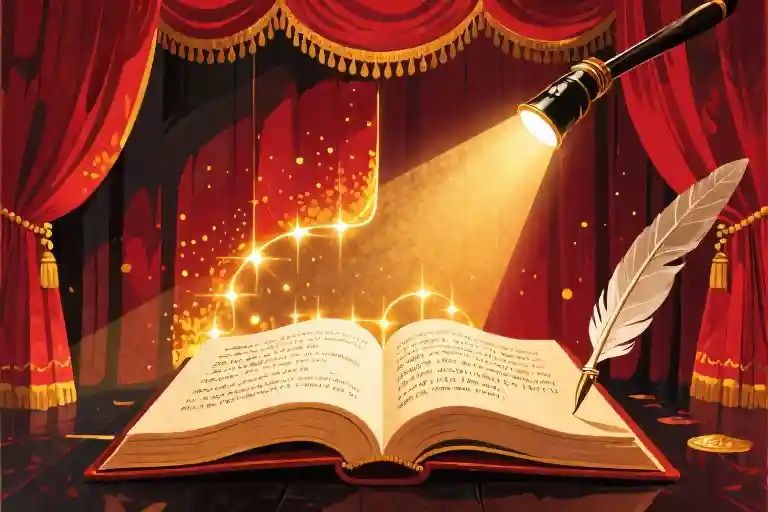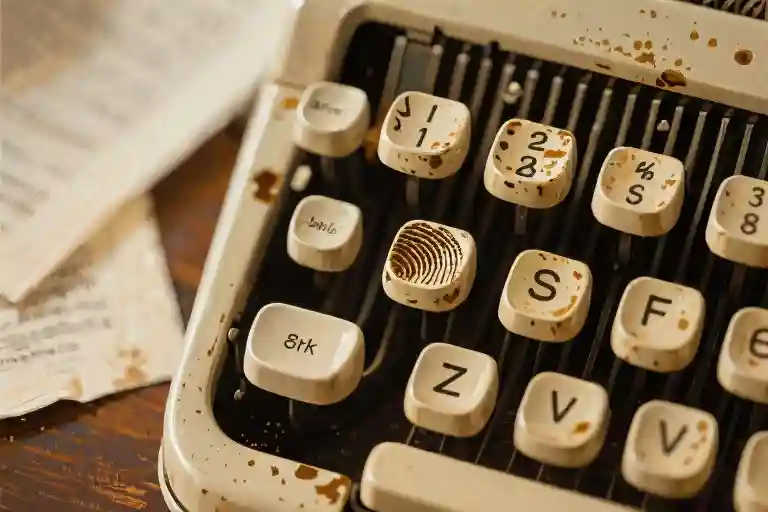The debate surrounding The Great Gatsby‘s relevance in modern America often feels as charged as one of Jay Gatsby’s infamous parties. When Kathryn Schulz declared her outright disdain for Fitzgerald’s masterpiece in a 2013 Vulture piece titled Why I Despise The Great Gatsby, she didn’t just critique a novel—she challenged a cultural institution. Yet this controversy reveals precisely why Gatsby endures: like the green light at the end of Daisy’s dock, the novel continues to illuminate uncomfortable truths about America that we’d rather ignore.
What makes The Great Gatsby the great American novel isn’t just its Jazz Age glamour or Fitzgerald’s jeweled prose. It’s how the story functions as a literary MRI scan, exposing the malignant tumors in the American psyche—the obsession with reinvention, the worship of wealth, and our collective willingness to confuse nostalgia with destiny. As we navigate another Gilded Age of crypto billionaires and influencer culture, Fitzgerald’s 1925 diagnosis feels more urgent than ever.
The brilliance of Fitzgerald’s approach lies in his surgical precision. Through Nick Carraway’s conflicted narration, we don’t just observe the Buchanans’ world—we become complicit in it. Those famous closing lines about “boats against the current” don’t merely describe Gatsby’s tragedy; they implicate every reader who’s ever chased an impossible dream. This layered storytelling explains why searches for The Great Gatsby analysis spike during economic downturns—we return to Fitzgerald when the American Dream shows its cracks.
Schulz’s central complaint—that the characters inspire neither love nor hate—ironically proves Fitzgerald’s point. The Buchanans aren’t meant to be villains; they’re products of a system that rewards carelessness. When Tom brags about white supremacy or Daisy whispers that rich girls “don’t marry poor boys,” they’re not moral failures but logical outcomes of unchecked privilege. In an era where hedge fund managers crash economies without consequence, Fitzgerald’s “careless people” have never felt more familiar.
Perhaps the most prescient aspect of The Great Gatsby is its understanding of performance. Gatsby doesn’t love Daisy—he loves the idea of Daisy, just as we don’t want wealth but the story of having wealth. This explains the novel’s resurgence during the social media age, where personal branding has replaced identity. The green light’s symbolism (Gatsby’s green light meaning remains a top literary search term) evolves with each generation—for 2020s readers, it might represent viral fame or NFT fortunes.
What Schulz dismisses as “an absence of empathy” is actually Fitzgerald’s greatest act of compassion. By showing us Gatsby’s funeral—where no one comes except Owl Eyes, who merely admired the library’s real books—we’re forced to confront our own participation in this theater of emptiness. The novel endures not despite its uncomfortable truths, but because of them. As political divisions widen and wealth gaps yawn, The Great Gatsby remains less a period piece than a prophecy—one we’re still struggling to either fulfill or escape.
The Alchemy of Words: Fitzgerald’s Symbolic Code
Fitzgerald’s prose in The Great Gatsby operates like a master jeweler’s workshop – every facet cut to refract multiple meanings simultaneously. Nowhere is this more evident than in the novel’s central symbol: the green light at the end of Daisy’s dock. This single image condenses three distinct yet interconnected layers of significance that reveal why Fitzgerald’s writing continues to captivate readers nearly a century later.
The Green Light as Desire
On its most immediate level, the pulsing green beacon represents Gatsby’s obsessive longing for Daisy. Fitzgerald renders this yearning with tactile precision in Chapter 1: “He stretched out his arms toward the dark water in a curious way…I could have sworn he was trembling.” The physicality of this gesture transforms abstract emotion into something we can almost touch – the ache of unfulfilled desire made visible across the bay’s expanse.
The Green Light as American Dream
Zooming out, the light becomes Fitzgerald’s brilliant distillation of the national mythology. The color green itself performs double duty – representing both the dollar bills fueling Gatsby’s ascent and the ‘go’ signal of relentless aspiration. Notice how the light’s positioning across the water mirrors the early settlers’ view of Manhattan – always visible yet perpetually out of reach. This symbolic layering explains why Gatsby’s story resonates beyond 1920s America; his tragic pursuit mirrors our collective chase after ever-receding fulfillment.
The Green Light as Narrative Engine
Structurally, the green light serves as Fitzgerald’s masterstroke of economical storytelling. Introduced in the opening chapter, it recurs during Gatsby and Daisy’s reunion (“the colossal significance of that light had now vanished forever”) and returns with devastating irony in the finale. This symbolic through-line creates what contemporary writers might call a ‘narrative callback system’ – a technique many modern authors still study and emulate.
The Density of Fitzgerald’s Prose
Comparing Gatsby to Hemingway’s The Sun Also Rises reveals Fitzgerald’s distinctive approach. Where Hemingway’s famous iceberg theory suggests most meaning lies beneath sparse surface text, Fitzgerald compresses layers of significance into single sentences. Consider the description of Daisy’s voice: “It was full of money – that was the inexhaustible charm that rose and fell in it.” In eleven words, Fitzgerald connects:
- Daisy’s literal wealth
- The metaphorical ‘currency’ of her social value
- The seductive power of wealth itself
This linguistic density explains why the novel’s 47,000 words (about half the length of typical modern novels) contain more thematic weight than books twice its size. Fitzgerald doesn’t just describe the Jazz Age – he encodes its DNA in symbols that continue to unlock new meanings as society evolves.
Why This Matters Today
Contemporary readers might initially find Fitzgerald’s symbolic approach challenging in our era of direct communication. Yet this very quality makes Gatsby uniquely suited for digital-age reinterpretation. The novel’s imagery functions like a literary QR code – compact surfaces containing vast stores of information waiting to be scanned by each generation. From TikTok analyses of Gatsby’s parties as influencer culture to Twitter threads comparing the green light to startup culture’s ‘next funding round,’ the novel’s symbolic richness invites endless engagement.
As we’ll explore in subsequent sections, this linguistic alchemy doesn’t merely make Gatsby beautiful – it makes the novel a precision instrument for examining American aspirations across decades. The green light that guided Gatsby still illuminates our own collective dreams and delusions.
The American Dream Dissected: Gatsby and His Modern Disciples
The lavish parties at Gatsby’s West Egg mansion weren’t merely social gatherings—they were performance art pieces foreshadowing today’s influencer culture. Fitzgerald’s description of “faces and voices and color under the constantly changing light” reads like a prophetic Instagram story, where every champagne flute and floating orchestra serves as content for the digital age. What Gatsby curated for Daisy’s attention, modern creators now stage for algorithmic approval.
The Currency of Attention
Daisy Buchanan’s infamous quality—her voice “full of money”—finds its contemporary counterpart in the monetized personas dominating social platforms. The 1920s debutante’s calculated charm mirrors today’s carefully engineered online identities, where self-worth becomes measurable in likes and sponsorship deals. Fitzgerald’s genius lay in recognizing how wealth distorts human connection long before “engagement metrics” entered our lexicon.
At Gatsby’s parties, we witness the original influencers: “people were not invited—they went there.” This precursor to viral culture reveals how status transforms into gravitational pull. The novel’s description of unearned celebrity (“Sometimes they came and went without having met Gatsby at all”) anticipates our era of famous-for-being-famous personalities.
The Illusion Economy
Gatsby’s shirts-tossing scene—where Daisy sobs over “such beautiful shirts”—exposes the emotional vacancy beneath material worship. Modern luxury haul videos replicate this dynamic, substituting silk shirts for unboxed designer goods. Fitzgerald diagnosed our collective confusion between possession and fulfillment, showing how objects become emotional surrogates centuries before “retail therapy” entered common usage.
The green light across the bay operates as the original algorithm—an ever-present, never-satisfied metric of success. Today’s version might be the follower count or stock portfolio, equally visible and equally elusive. Gatsby’s tragic miscalculation wasn’t loving Daisy, but believing he could quantify affection through visible achievements.
The Viral Nature of Desire
Nick’s observation that “the exhilarating ripple of her voice was a wild tonic in the rain” reveals how Fitzgerald understood desire as a contagious force. Our modern version plays out through TikTok trends and viral challenges, where imitation becomes the sincerest form of aspiration. The Buchanans’ set didn’t need social media—their careless behavior spread through high society like today’s cancel culture dramas.
Fitzgerald’s depiction of Gatsby’s rise—”he invented just the sort of Jay Gatsby that a seventeen-year-old boy would be likely to invent”—anticipates personal branding culture. The self-made man becomes the original content creator, remixing his identity for maximum appeal.
The Filtered Reality
West Egg’s glittering surface mirrors today’s curated feeds, where “facts” become adjustable elements. Gatsby’s backstory revisions (“I am the son of some wealthy people in the Middle West—all dead now”) find their parallel in bio optimization and strategic omissions. Fitzgerald recognized how personal narratives morph under ambition’s pressure, creating protagonists perfect for our post-truth era.
The novel’s most devastating insight might be that Gatsby’s parties attracted crowds, but his funeral drew none. This foreshadows our disposable digital relationships—thousands of followers, zero real connections. The empty mansion after Gatsby’s death looks eerily like a deleted Instagram account, all that carefully constructed visibility vanishing overnight.
Through these prescient parallels, The Great Gatsby becomes more than period fiction—it’s a field guide to understanding how technology amplifies, but doesn’t fundamentally alter, our oldest social instincts and economic anxieties.
The Ghost of Buchanans: Evolution of Privilege in America
Tom and Daisy Buchanan don’t merely represent 1920s aristocracy – they’ve become America’s most enduring cultural export. A century after Fitzgerald penned their careless cruelty, we’ve witnessed the Buchanans metastasize into our political dynasties, tech oligarchs, and hedge fund managers. Their modern incarnations still retreat into moneyed fortresses when crises hit, only now they’ve traded Long Island mansions for Hamptons compounds and Swiss bank accounts.
From Eugenics to Elite College Scandals
Fitzgerald’s genius lay in exposing how privilege perpetuates itself through coded systems. When Tom lectures about “The Rise of the Colored Empires,” he’s not just displaying casual racism – he’s demonstrating how wealth weaponizes pseudoscience to maintain dominance. Fast forward to 2019, when Operation Varsity Blues revealed wealthy parents bribing coaches to secure Ivy League spots for their children. The language changed (from racial purity to “holistic admissions”), but the game remains identical: systemic advantage disguised as meritocracy.
Modern research confirms what Fitzgerald intuited. A 2020 Opportunity Insights study showed children from top 1% families are 77 times more likely to attend Ivy League schools than bottom 20% peers. Like Tom justifying his inherited wealth, today’s elite have developed new vocabulary – “legacy admissions,” “donor considerations” – to sanitize hereditary privilege.
Nick Carraway’s Digital Descendants
If Tom represents active corruption, Nick embodies our complicity – and his spiritual successors populate every comments section today. Fitzgerald gives us endless clues about Nick’s moral compromise: his willingness to arrange Gatsby-Daisy meetings, his silence during Tom’s racist tirades, that devastating final line about being “within and without.”
Social media has multiplied this duality exponentially. Consider how we:
- Virtue-signal about wealth inequality while shopping on Amazon
- Decry climate change while booking weekend flights
- Mock “tone-deaf celebrities” while envying their lifestyles
Like Nick, we’ve become expert at curating personas that distance us from the systems we sustain. The modern twist? Where Nick retreated to the Midwest, we perform our guilt through hashtag activism before returning to business as usual.
The New Carelessness
What makes Fitzgerald’s critique timeless is its recognition that privilege isn’t about malice, but about cultivated obliviousness. When Daisy says “That’s the best thing a girl can be in this world, a beautiful little fool,” she’s not being cynical – she genuinely believes it.
Today’s elite exhibit the same unconscious cruelty through:
- Tech founders preaching connectivity while sending kids to device-free schools
- Politicians gutting public education while enrolling children in elite private academies
- Celebrities championing sustainability while maintaining private jet fleets
Fitzgerald understood this behavior stems not from calculated hypocrisy, but from what we now call “epistemic bubbles” – environments where wealth becomes its own justification. The Buchanans weren’t evil; they simply couldn’t conceive of reality beyond their gilded cage. Sound familiar?
Why This Still Matters
Reading Gatsby today isn’t just literary appreciation – it’s civic hygiene. Fitzgerald gives us the diagnostic tools to recognize privilege in its modern disguises:
- The Virtue Alibi – Like Tom using “family values” to mask infidelity, today’s elites use philanthropy to launder reputations
- Nostalgia Traps – Gatsby’s obsession with recapturing the past mirrors MAGA rhetoric about restoring some mythical golden age
- Performative Outrage – Nick’s disapproval of Tom while still attending his parties prefigures our era of social media condemnation followed by quiet compliance
The tragedy isn’t that the Buchanans won – it’s that we’ve all learned to play their game while pretending we’re not. Fitzgerald’s greatest prophecy? That America would become a nation of Nicks: knowing better, doing nothing, and telling ourselves stories about our innocence even as we cash the checks.
Why Criticizing Gatsby’s Characters Misses the Point
Kathryn Schulz’s 2013 critique of The Great Gatsby raises valid questions about literary taste, but her central argument – that Fitzgerald’s characters are too despicable to inspire empathy – fundamentally misunderstands the novel’s purpose. When she complains that “none of its characters are likable,” she’s not wrong; she’s simply criticizing the book for achieving exactly what it set out to do.
The Intentional Void Where Empathy Should Be
Schulz’s critique hinges on what she perceives as Fitzgerald’s “absence of empathy” toward his characters. But this supposed flaw is actually the novel’s greatest strength. Fitzgerald deliberately creates emotional distance between readers and characters like Tom and Daisy Buchanan because they represent something far more important than individual personalities – they embody systemic moral bankruptcy.
Consider how Fitzgerald describes the Buchanans:
“They were careless people, Tom and Daisy – they smashed up things and creatures and then retreated back into their money or their vast carelessness.”
This isn’t poor character development; it’s surgical precision. The emotional chill Schulz detects isn’t accidental – it’s the temperature at which privilege operates. By denying readers easy emotional connections, Fitzgerald forces us to engage intellectually with the systems these characters represent.
Nick Carraway: The Unreliable Mirror
Schulz’s frustration with narrator Nick Carraway’s passivity reveals a deeper misunderstanding of his role. She writes:
“At no point are we given cause, or room, to feel complicit. Our position throughout is that of an innocent bystander.”
But Nick’s passive observation isn’t a narrative flaw – it’s the entire point. His middle-class midwestern background makes him the perfect lens through which to view this world of excess, precisely because he’s both enchanted and repelled by it. His famous claim of being “one of the few honest people I have ever known” drips with irony that Schulz seems to miss.
Modern readers might recognize Nick’s type in today’s social media commentators – people who document societal ills while carefully maintaining their own detachment. Fitzgerald understood this dynamic decades before the internet made it ubiquitous.
Gatsby’s Love as Deliberate Delusion
Schulz questions whether Gatsby truly loves Daisy, calling their relationship unbelievable. But that’s exactly what makes it brilliant social commentary. Gatsby doesn’t love Daisy – he loves the idea of Daisy, just as Americans don’t love wealth – they love the idea of wealth. Fitzgerald constructs this relationship as a beautiful fraud because the American Dream itself is a beautiful fraud.
The green light across the bay isn’t just a symbol of Gatsby’s longing – it’s the flickering promise of upward mobility that keeps generations striving. That this promise proves hollow (as symbolized by Daisy’s ultimate betrayal) doesn’t weaken the novel’s message; it confirms Fitzgerald’s central thesis about the emptiness of material aspiration.
When Unlikeable Characters Serve a Greater Purpose
Schulz’s critique falls into a common trap – assuming characters must be sympathetic to be effective. But some of literature’s greatest works feature deliberately repellant protagonists:
- Shakespeare’s Macbeth
- Milton’s Satan in Paradise Lost
- Bret Easton Ellis’s Patrick Bateman
These characters aren’t meant to be liked; they’re meant to be studied. Fitzgerald’s genius lies in making his characters just glamorous enough to seduce us initially, then gradually revealing their moral rot – much like the American Dream itself seduces then disappoints.
The Timeliness of Fitzgerald’s Chill
What Schulz interprets as emotional coldness is actually prophetic clarity. Fitzgerald saw through the glitter of the Jazz Age to the moral vacuum beneath. His “unsympathetic” portrayal of wealthy elites anticipated everything from the 2008 financial crisis to the college admissions scandals of 2019.
When Tom Buchanan casually discusses white supremacist theories or when Daisy admits she hopes her daughter will be “a beautiful little fool,” we’re not supposed to like these people. We’re supposed to recognize them – in our politicians, our celebrities, and sometimes, uncomfortably, in ourselves.
Fitzgerald’s achievement isn’t in making us care about Gatsby and his circle – it’s in making us see how their values continue to shape America nearly a century later. The emotional distance Schulz laments is the critical space we need to examine our own complicity in systems of privilege and inequality.
In the end, The Great Gatsby endures not despite its “unlikable” characters, but because of them. They serve as Fitzgerald’s scalpel, dissecting the American psyche with a precision that remains uncomfortably relevant. The novel’s greatness lies in its refusal to let us off the hook with easy empathy – it demands we think critically about the world it depicts, and by extension, about our own.
Reading Gatsby in the TikTok Era: Three Contemporary Approaches
Nearly a century after its publication, The Great Gatsby continues to spark conversations – not just in literature classrooms but across social media platforms where #GatsbyAesthetic garners millions of views. This enduring relevance suggests Fitzgerald’s novel operates like a cultural prism, refracting new meanings with each generational shift. For today’s readers navigating shortened attention spans and visual storytelling dominance, here are three fresh lenses to engage with this American classic.
1. The Algorithm of Desire: Gatsby as Proto-Influencer
Watch any TikTok tour of billionaire mansions or “day in the life” vlogs, and you’ll recognize Gatsby’s West Egg parties updated for the digital age. Contemporary readers might analyze:
- Personal Branding: Gatsby’s self-mythologizing (“Oxford man,” “war hero”) mirrors today’s curated social media personas
- Viral Spectacle: The novel’s lavish parties function like Instagram Stories – dazzling surfaces hiding emotional voids
- Engagement Metrics: Daisy’s “voice full of money” becomes the equivalent of validation through likes and shares
Suggested reading pairing: Jia Tolentino’s Trick Mirror explores how social media transforms our self-perception, much like Gatsby’s fabricated identity.
2. Economic Anxiety: From Bootlegging to Side Hustles
The 1920s economic boom and our current gig economy share unsettling parallels:
| 1925 Context | 2025 Parallel |
|---|---|
| Gatsby’s shady wealth accumulation | Crypto speculation and influencer marketing |
| Tom’s inherited privilege | Silicon Valley nepotism babies |
| Myrtle’s social climbing | LinkedIn personal branding coaches |
This approach works particularly well when examining Chapter 5’s gift-giving scene, where Gatsby literally showers Daisy with designer shirts – a moment that reads differently in our age of luxury hauls and “quiet luxury” trends.
3. Environmental Reading: Ashes to Ashes
Fitzgerald’s haunting Valley of Ashes takes on new urgency amid climate change discussions. Modern readers might consider:
- The industrial wasteland as early depiction of environmental racism
- Gatsby’s green light symbolizing both hope and unsustainable consumption
- Tom’s careless wealth as precursor to private jet culture
Complementary text: Jeff Goodell’s The Heat Will Kill You First helps connect Fitzgerald’s ecological imagery to current crises.
Beyond the Book: Curated Extensions
For those wanting to explore Gatsby’s legacy further:
- The Great Gatsby and the American Dream (podcast series) – Harvard scholars examine the novel through economic history
- Gatsby: The Graphic Novel – A stunning visual adaptation that translates Fitzgerald’s imagery for visual learners
- The New York Times’ “Modern Love” column – Real-life Gatsby/Daisy dynamics in contemporary relationships
As you revisit the text through these frameworks, notice how Fitzgerald’s observations about wealth, identity, and aspiration manifest in today’s digital landscapes. The true test of a classic isn’t how well it captures its own time, but how sharply it illuminates ours.
The Enduring Beacon: Why Gatsby’s Light Still Guides Us
As we close this examination of Fitzgerald’s masterpiece, the final lines of The Great Gatsby resonate with renewed urgency in our digital age: “So we beat on, boats against the current, borne back ceaselessly into the past.” This iconic metaphor takes on fresh meaning when we consider how social media algorithms and nostalgia-driven content constantly pull us backward into curated versions of our personal histories – not unlike Gatsby reconstructing his past with Daisy.
The green light that captivated Gatsby’s imagination becomes our own contemporary obsession – whether it’s the next promotion, the perfect Instagram aesthetic, or some elusive state of fulfillment just beyond our reach. Fitzgerald’s genius lies in making this very human yearning feel simultaneously timeless and urgently modern. That flickering dock light across the Sound isn’t merely a 1920s literary device; it’s the notification bubble on your phone, the ‘limited time offer’ flashing across your screen, the carefully filtered vacation photos of acquaintances that make your own life seem inadequate by comparison.
What makes The Great Gatsby the definitive American novel isn’t just its dissection of Jazz Age excess, but its uncanny ability to mirror every subsequent generation’s version of the same emptiness beneath the glitter. The Buchanans’ careless privilege finds its echo in today’s influencer culture and corporate impunity. Gatsby’s self-mythologizing anticipates our carefully curated LinkedIn profiles and personal branding obsessions. Even Nick’s complicit voyeurism mirrors our endless scrolling through others’ highlight reels while lamenting our own ordinary lives.
As you turn the final page, consider this question not about the characters, but about yourself: What impossible green light dominates your personal horizon? Is it a relationship you can’t recreate? A career milestone that keeps retreating as you approach? The phantom of ‘having it all’ that evaporates upon closer inspection? Fitzgerald’s warning remains vital – we risk becoming so fixated on the light that we never see the decay beneath the surface, whether it’s in West Egg mansions or our own carefully constructed facades.
Perhaps the most profound way to honor this novel’s legacy is to read it not just as a period piece, but as a mirror. When you encounter Tom’s casual racism or Daisy’s performative fragility, notice their contemporary equivalents in boardrooms and comment sections. When Gatsby’s shirts tumble in colorful excess, remember the dopamine rush of unboxing videos and haul culture. The specific trappings change, but the human vulnerabilities remain stubbornly constant.
In an era where we’re all constructing personal narratives as carefully as Gatsby crafted his, Fitzgerald’s masterpiece offers both caution and consolation. The tragedy isn’t that Gatsby failed – it’s that his dream was always an illusion. The triumph isn’t that Nick walked away – it’s that he had the courage to tell the truth about what he saw. As we navigate our own age of algorithmic currents and filtered realities, that may be the novel’s most valuable lesson: we must keep rowing forward, even when every trending topic and nostalgia cycle tries to pull us back.
So we scroll on, feeds against the algorithm, endlessly comparing our behind-the-scenes to everyone else’s highlight reels.





